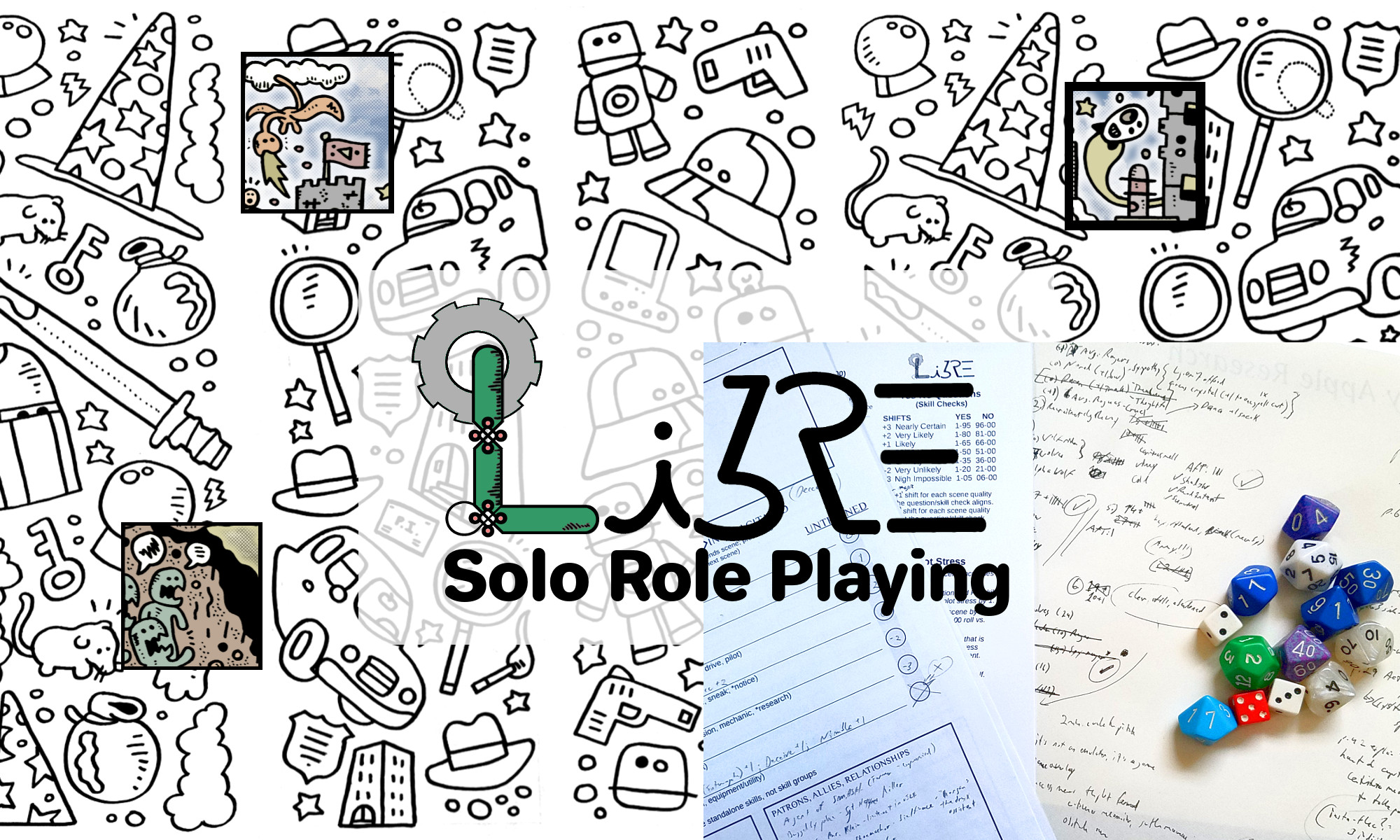Choose? Don’t just choose. Make Your Own Adventure!
Libre Solo Role Playing lets you tell the stories you want, in your way. Create your protagonist. Let the world challenge your character with obstacles to overcome, plot twists, setbacks and surprises. Recruit allies to help your player character’s cause, and square off against dangerous foes and recurring rivals. Take your character on perilous journeys, conduct thorough investigations, and seek to overcome the threats of an unpredictable world.
The game includes a story engine that creates and runs plots on the fly. Use it as a standalone with your own role playing game of choice. Or combine it with the included role playing game rules, streamlined to plug directly into its game master engine, to support heroes from any setting. Challenge yourself and your protagonist, play to win, and tell great stories along the way.
Looking for our downloads? They’re over here.
